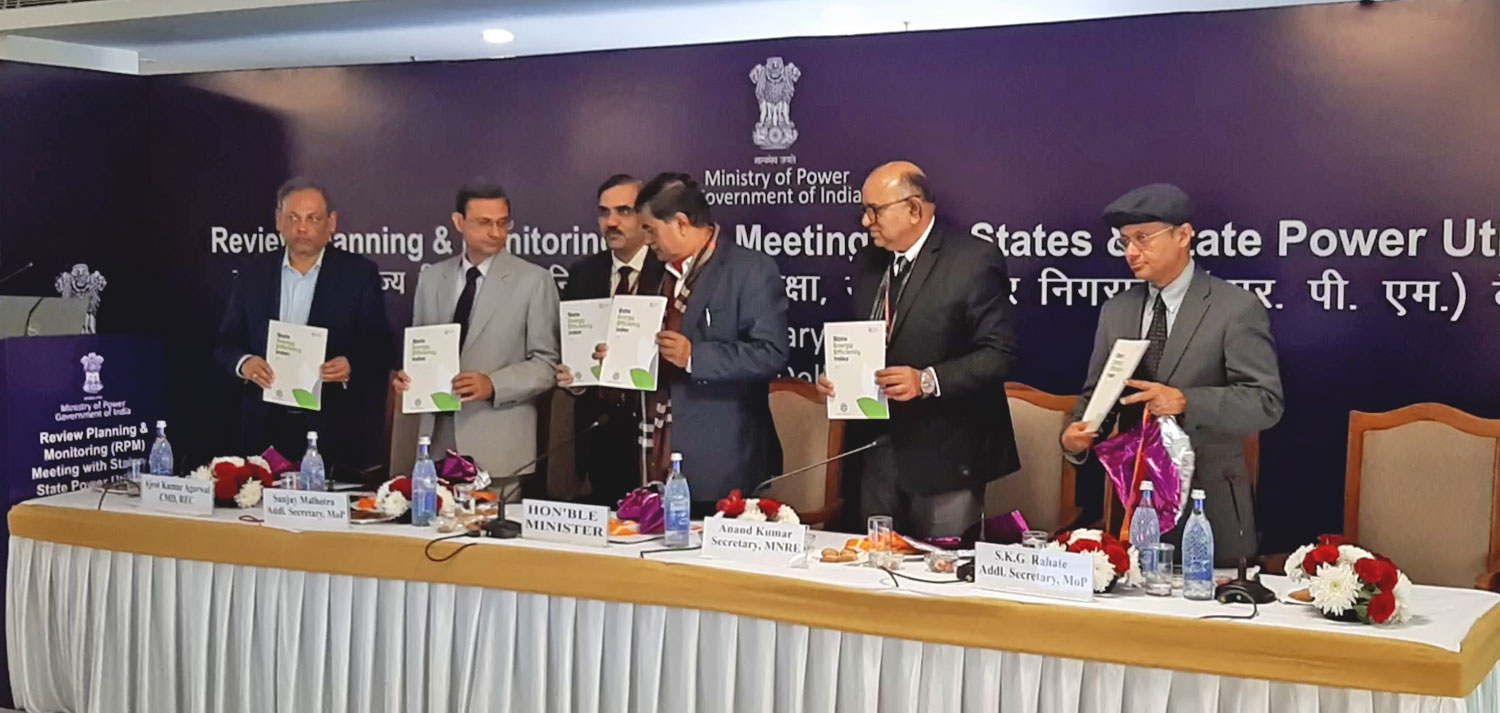
STATE ENERGY EFFICIENCY INDEX 2019
January 10, 2020, New Delhi: The Bureau of Energy Efficiency (BEE), Ministry of Power today released the ‘State Energy Efficiency Index 2019’, which tracks the progress of Energy Efficiency (EE) initiatives in 36 states and union territories based on 97 significant indicators. The Index will help states contribute towards national goals on energy security and climate action by
- Helping drive EE policies and program implementation at the state and local level
- Tracking progress in managing the states’ and India’s energy footprint
- Institutionalising data capture and monitoring of EE activities by states
The index was launched today by Shri Raj Kumar Singh, Honourable Minister of State (Independent Charge) for Power and New & Renewable Energy and Honourable Minister of State for Skill Development & Entrepreneurship, at the Review Planning & Monitoring (RPM) Meeting with States & State Power Utilities.
The first such Index, the “State Energy Efficiency Preparedness Index 2018”, was launched on August 1, 2018. Taking forward the State Energy Efficiency Preparedness Index 2018, the State Energy Efficiency Index 2019 incorporates qualitative, quantitative and outcome-based indicators to assess energy efficiency initiatives, programs and outcomes in five distinct sectors – buildings, industry, municipalities, transport, agriculture, and DISCOMs. New indicators for this year include adoption of Energy Conservation Building Code (ECBC) 2017, energy efficiency in MSME clusters, etc.
The State Energy Efficiency Index 2019 was developed by (Alliance for an Energy Efficient Economy) AEEE under the guidance and leadership of (Bureau of Energy Efficiency) BEE, with technical counsel from American Council for an Energy Efficient Economy (ACEEE) and support from MacArthur Foundation.
The required data was collected from the concerned state departments such as DISCOMs, Urban Development departments and other departments with the help of State Designated Agencies (SDAs). This year, a total of 36 states and union territories have been assessed based on their efforts and achievements in policy and regulation, financing mechanisms, institutional capacity, adoption of energy efficiency measures and energy savings achieved.
For rational comparison, States/UTs are grouped into four groups based on aggregated Total Primary Energy Supply (TPES) required to meet the state’s actual energy demand (electricity, coal, oil, gas, etc.) across sectors. TPES grouping shall help states compare performance and share best practices within their peer group. Under four categories based on TPES, Haryana, Kerala, Karnataka, Maharashta, Himachal Pradesh, Uttarakhand, Puducherry and Chandigarh have been evaluated as progressive states/UTs in the State Energy Efficiency Index 2019.
Key Takeaways for States
State EE Index 2019 shows that majority of the initiatives taken by states are related to Policies and Regulations. Most of the first-generation energy efficiency policies prepared by BEE under programmes on Standards & Labelling (S&L), ECBC, Perform Achieve & Trade (PAT), etc. are understood by states and as the next steps they should focus on ensuring greater compliance to achieve savings. Based on the analysis of responses submitted by states this year, a three-point agenda is suggested for consideration by state agencies:
- Proactive role by states in policy formulation and implementation to shift the focus from “policies in place” to “policies successfully implemented”.
- Strengthening the mechanism for data capture, management and public availability of data: For this year’s Index, SDAs proactively contacted various state departments to gather data. However, SDAs should further enhance their engagement with state departments and private sector to enable a robust mechanism for Energy Data Management System.
- Enhancing the credibility of EE schemes: Ensuring the integrity of programs that have direct or indirect linkages with common consumers is significant to energy efficiency market transformation.States must demonstrate an approach which includes enforcement and compliance checks as well as independent monitoring and verification of savings, which is integral to all EE policies and programs.
Visit the State Energy Efficiency Index Portal for more information about the Index.